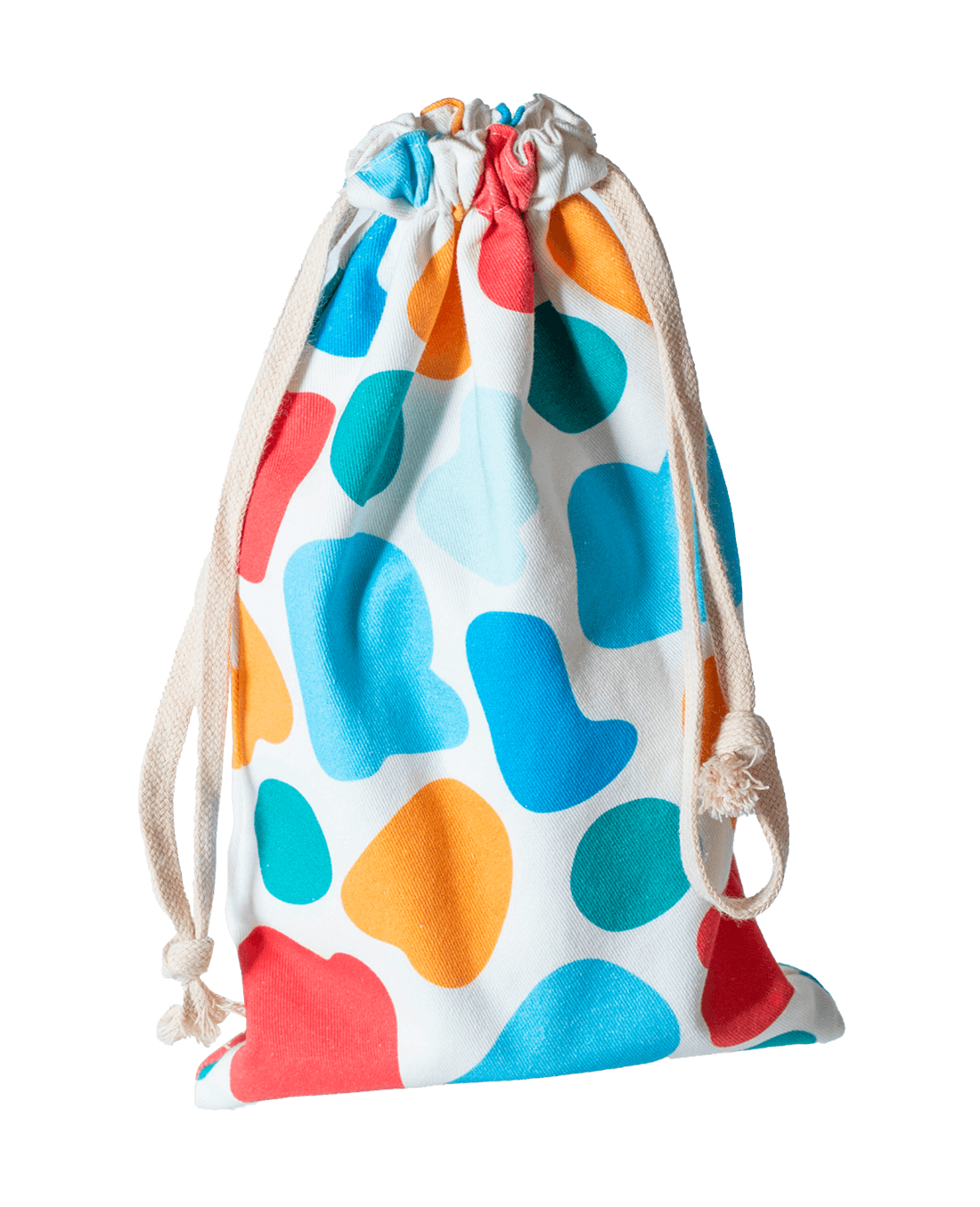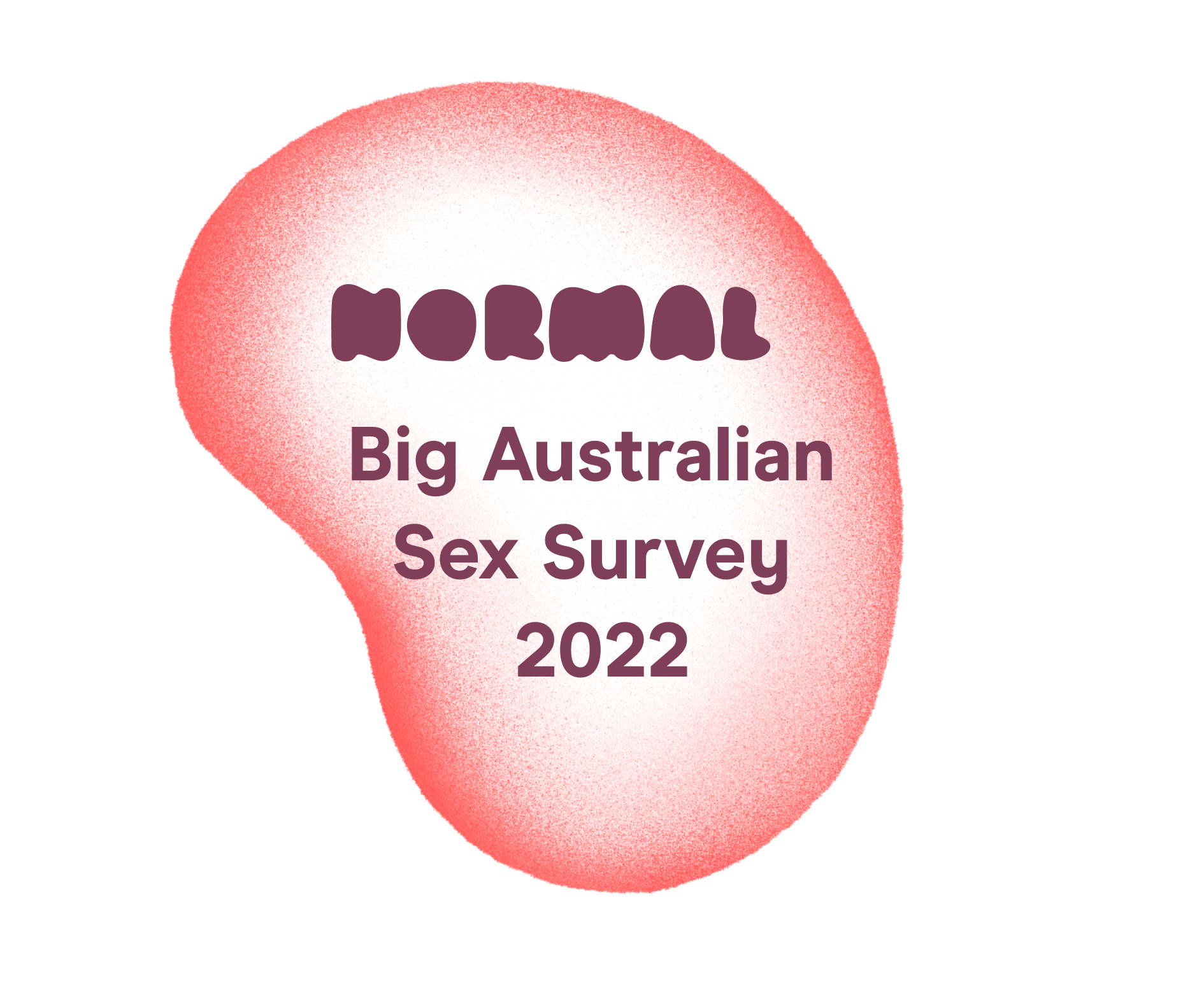
Better conversations begin with better data.

Our public agencies don’t gather robust data on trends in sex, dating & relationships currently, so NORMAL surveys a representative sample of over 1,000 Australians each year to fill the ‘sex data gap’.
In a year when so much has changed, from the movement to improve consent education to the ending of a global pandemic, this survey takes a deeper look at how these trends are shaping our lives.
This report presents some of the most interesting findings on 10 themes that stood out to us this year: from education to erotica, and libido to LGBTQ+ experiences.
But this truly is just the tip of the iceberg! If you’d like to enquire about any of the topics covered in the survey, or make bespoke requests for media or policy purposes, feel free to get in touch using the details at the end of the survey.
01: Pleasure by the numbers
The orgasm gap is finally starting to close
3 in 5 Australians (61%) ‘always’ or ‘almost always’ orgasm during partnered sex, while 1 in 5 of us say we ‘rarely’ or ‘never’ orgasm - but pleasure is not equally distributed, especially when it comes to a phenomenon known as the ‘gender orgasm gap’.
However, for the first time, we’ve seen a sharp fall in the size of the gender orgasm gap - with the gap betweem female-identifying* & male-identifying* respondents closing by a quarter in a year.
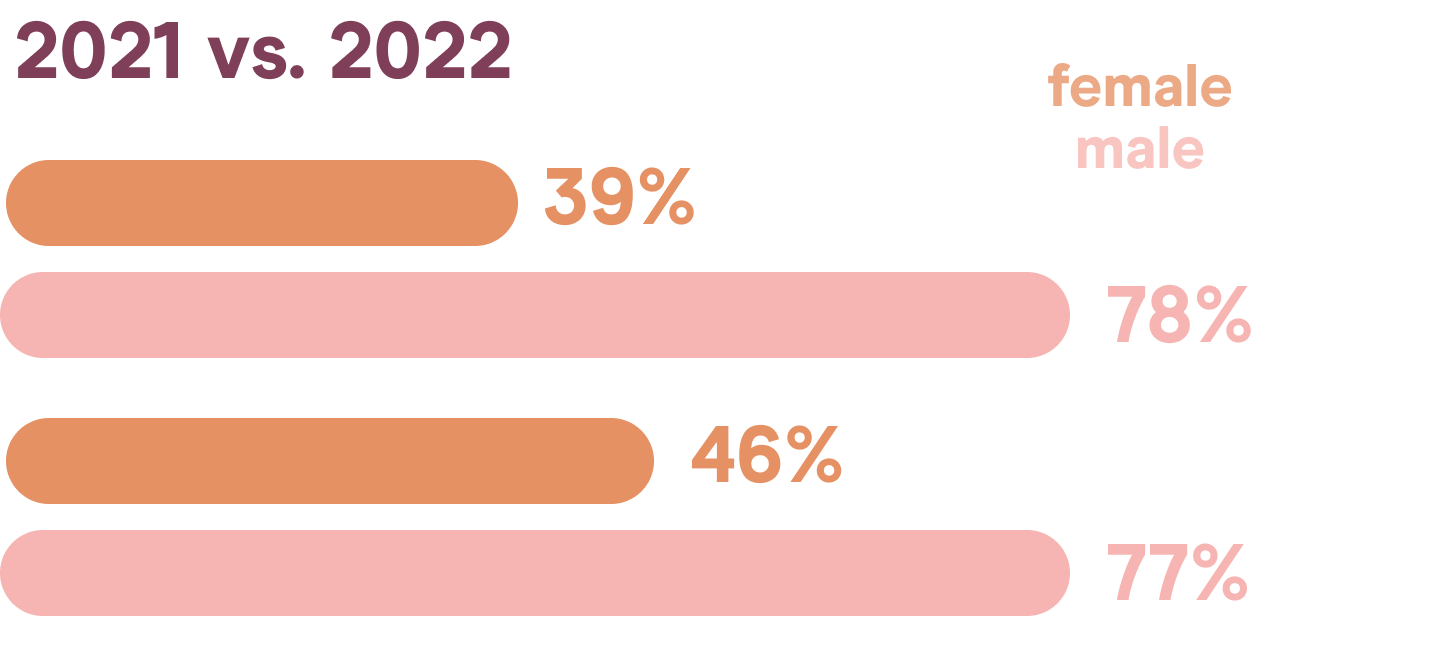
Of course, gender is only one form of orgasm gap: there are many other factors, identities and experiences that are correlated with our experiences in partnered sex.

Just 38% of respondents rated themselves as confident in sharing their desires & preferences with partners - and this communication gap contributes to the orgasm gap.
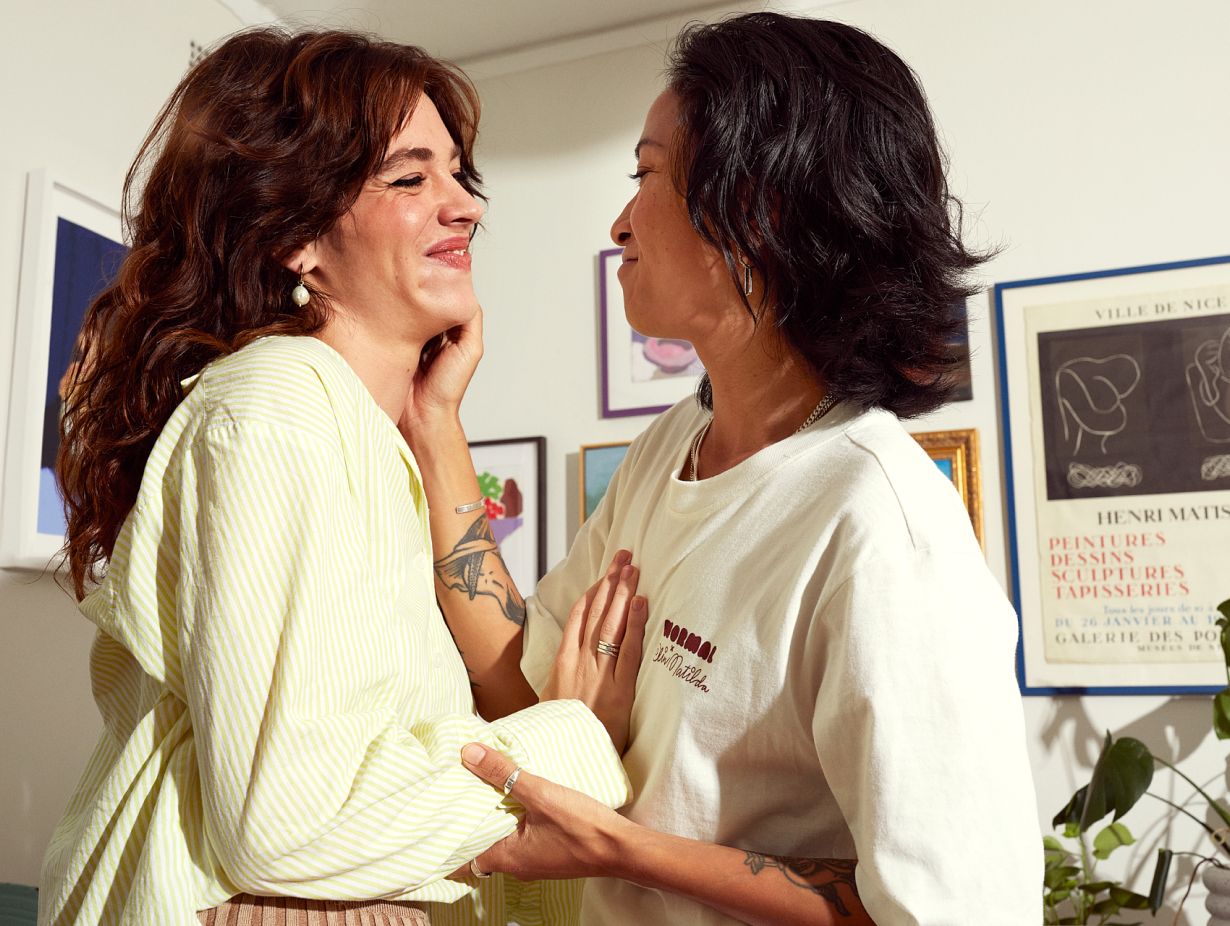
Females, non-binary people, people raised in conservative environments, neurodivergent people & people living with a mental illness are less confident than average sharing their desires.
Males, people raised in progressive environments, and people living with a physical disability are more confident than average sharing their desires.
Last year’s survey also found that a large ‘masturbation gap’ connected to the gender orgasm gap, with males masturbating more than 2X as much as females. This year, we investigated the connection between masturbation & pleasure with partners more.
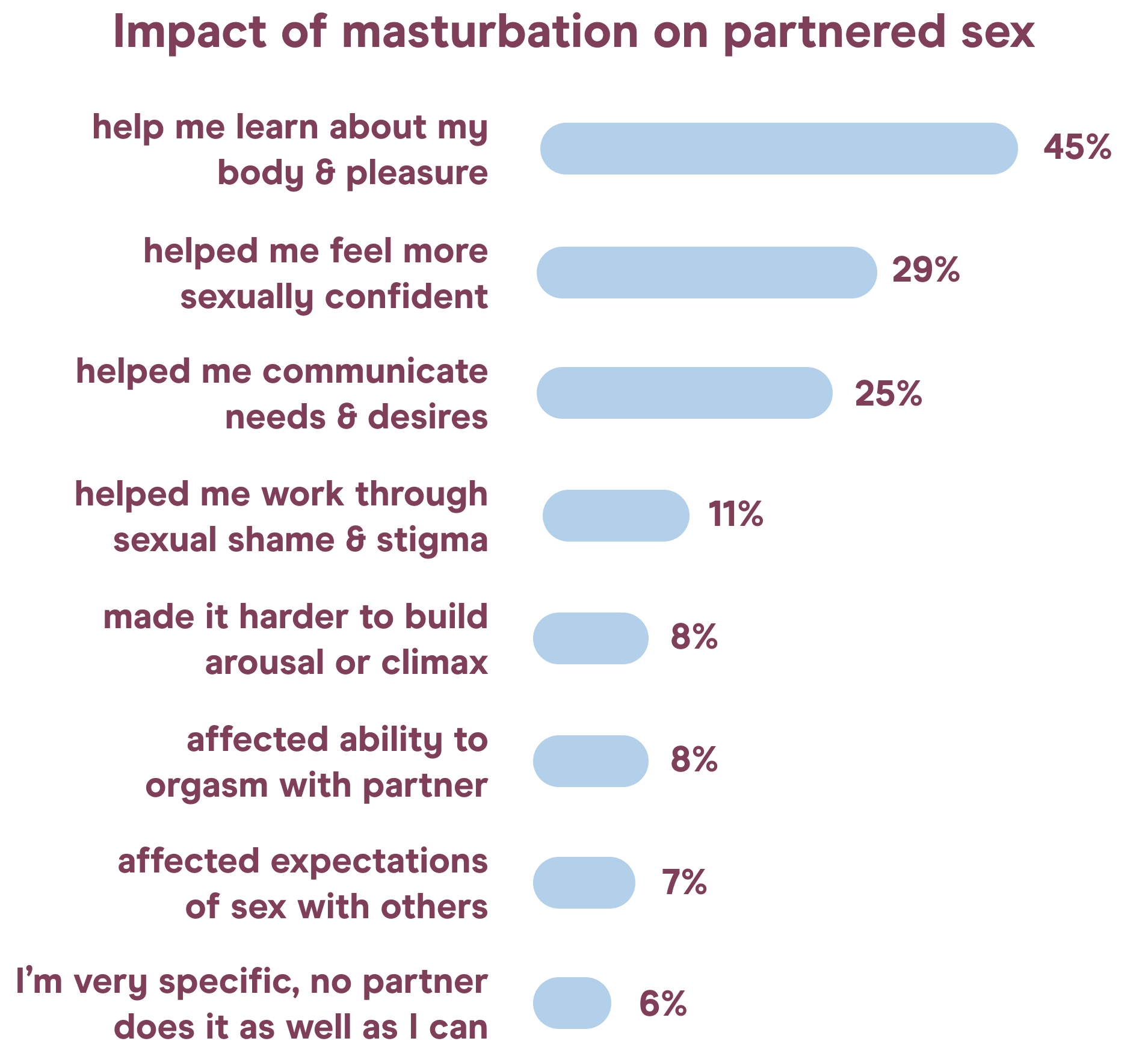
However, orgasms aren’t everything: rates of overall satisfaction with our sex lives are nearly 6X lower than the rate of people who frequently orgasm.
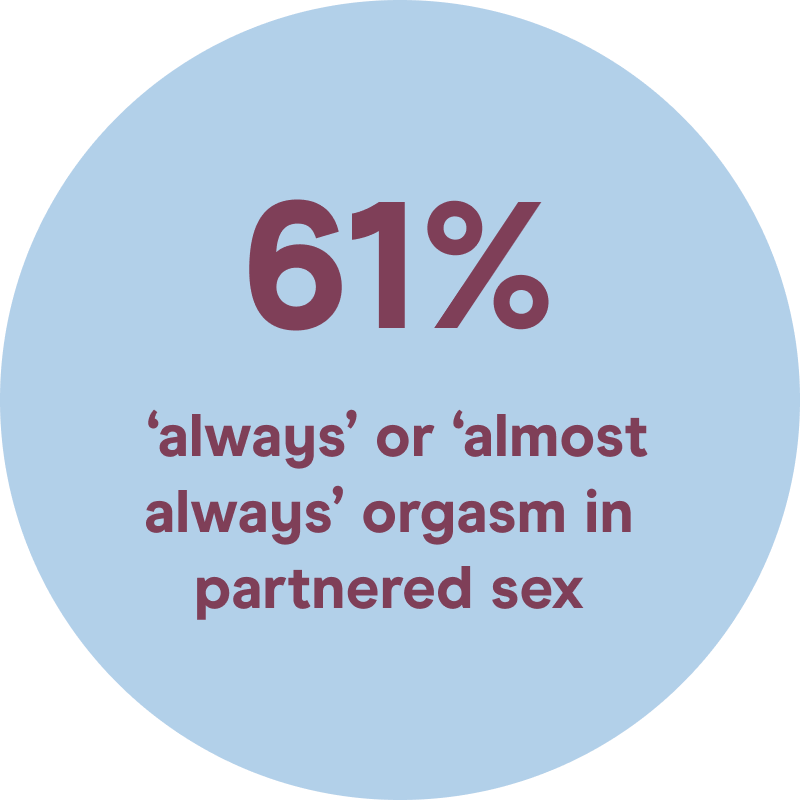
vs.
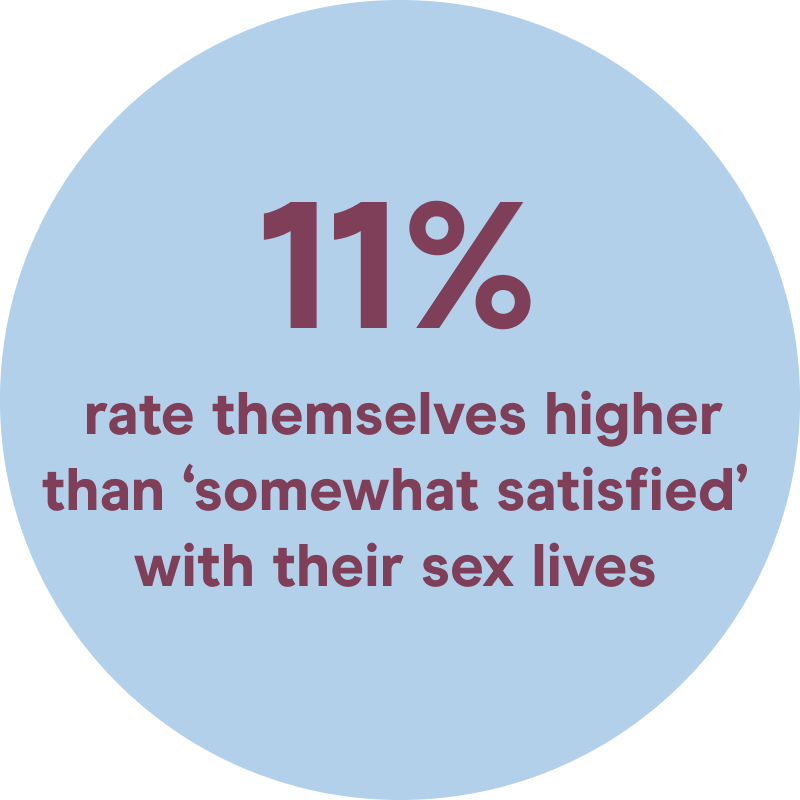
Being ‘orgasm-centric’ can sometimes exacerbate sexual dysfunction & concerns - as well as creating pressure to engage in practices like orgasm faking.
Orgasm faking can be a short-term solution to issues which require communication, experimentation & potentially professional support.
42% of respondents said they had faked orgasms, with the top reasons being ‘wanting to provide positive reinforcement’, ‘wanting sex to end’ and ‘avoiding talk about it because my partner wasn’t able to get me there’.
02: The ins and outs of anatomy
It’s the year of the clit, but who is being left behind?

Clitoral stimulation is the most likely to produce orgasms for people with vulvas - and it turns out Australians are most comfortable identifying & bringing pleasure to the clitoris!
This is a huge milestone given the full structure of the clitoris was only mapped with an MRI in 2005 (by Australian urologist Professor Helen O’Connell).
Which body parts are you confident identifying and bringing pleasure to?
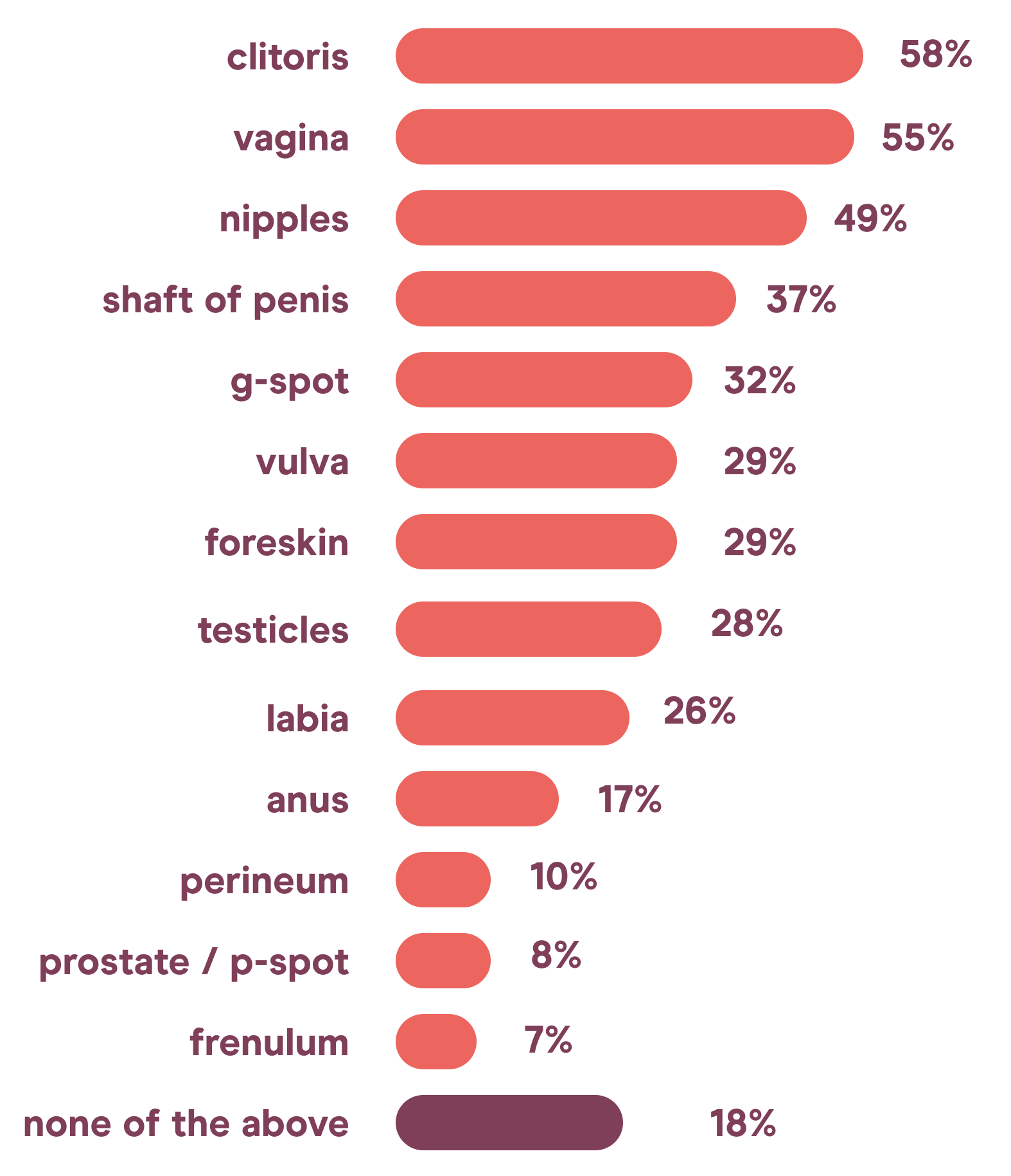
On average, we have a higher level of understanding of anatomy for people with vulvas than for people with penises. The only group who were an exception to this were LGBTQ+ people with penises.
This raises the question: has the sexual wellness movement left people with penises behind?
Anxieties about genitals are also common, with 1 in 5 people expressing concerns in this area
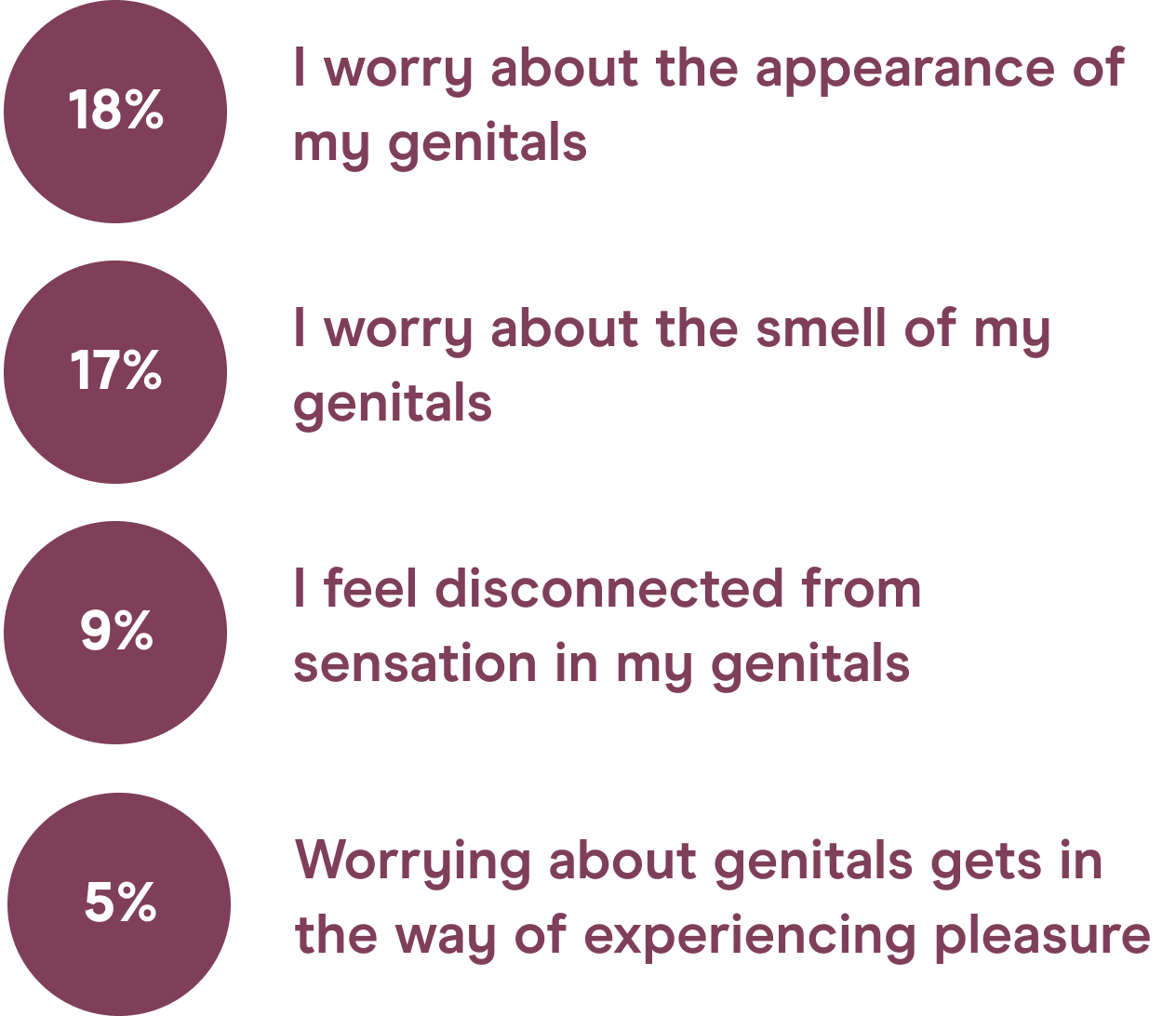
Australians also have wildly different (and heteronormative) definitions of what ‘sex’ is
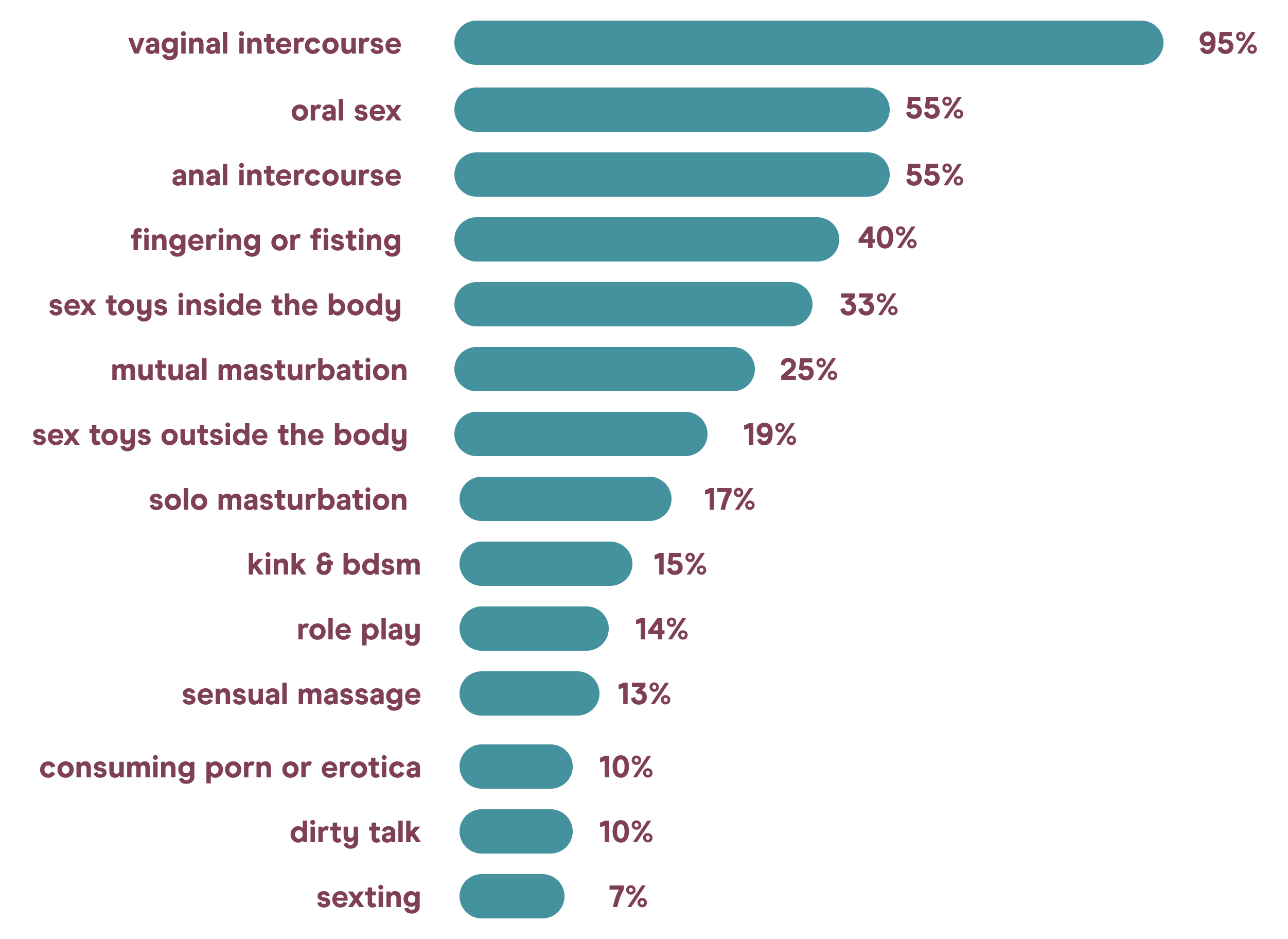

Friends with benefits?
Sign up for emails to receive sex-positive education, research and of course: a few cheeky discounts!
03: Our biggest sexual concerns
Low libido is the new normal post-Covid
During Covid, there was a bifurcation in the impact of lockdowns and uncertainty on sexuality: some people ‘thrived’, while others struggled with low libido and just ‘survived’.
A year on, low libido appears to be a lingering impact of the pandemic, replacing ‘body image making it hard to enjoy sex’ as the biggest sexual issue for Australians.
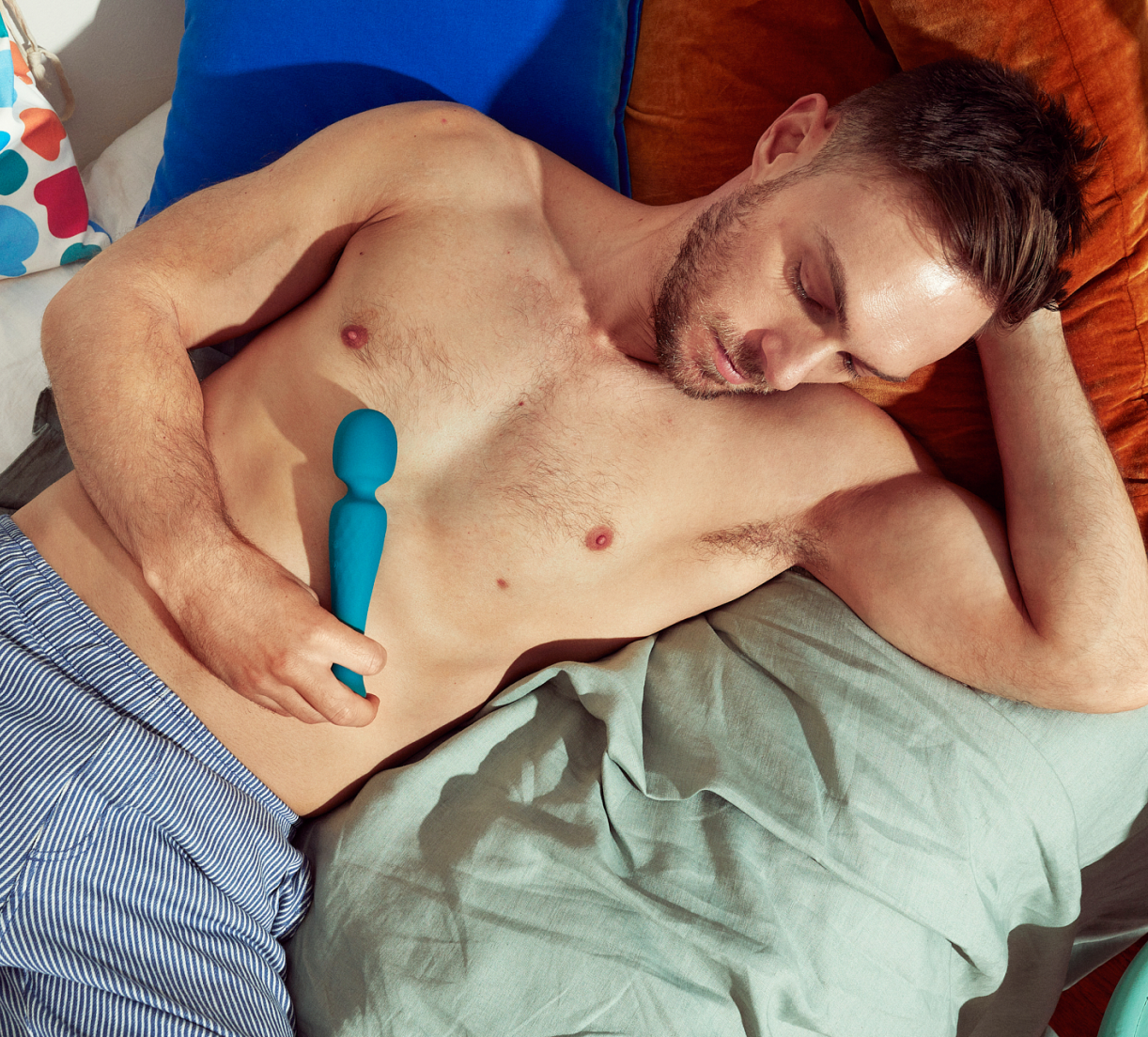
Low libido is a consistent top issue across the board, with body image & mental health-related concerns also common
female-identifying
#1 Low libido
#2 Body image making it hard to enjoy sex
#3 Not feeling confident during sex
male-identifying
#1 Low libido
#2 Wanting to give partner more pleasure
#3 Not understanding how my body / partner’s body works
living with a chronic illness
#1 Low libido
#2 Body image making it hard to enjoy sex
#3 Low self-esteem
living with a mental illness
#1 Low self-esteem in everyday life affecting sex life
#2 Body image making it hard to enjoy sex
#3 Not feeling confident during sex
boomer
#1 Low libido
#2 Not being able to hold erections
#3 Wanting to give partners more pleasure
millennial
#1 Low libido
#2 Not feeling confident during sex
#3 Body image making it hard to enjoy sex
lesbian
#1 Low libido
#2 Not feeling confident during sex
#3 Low self-esteem in everyday life affecting sex life
gay male
#1 Not feeling confident during sex
#2 Low self-esteem in everyday life affecting sex life
#3 Low libido
prefer to self-describe sexuality
#1 Body image making it hard to enjoy sex
#2 Not understanding how my body or my partner’s body work
#3 Low libido
bisexual
#1 Low self-esteem in everyday life affecting sex life
#2 Not feeling confident during sex
#3 Low libido
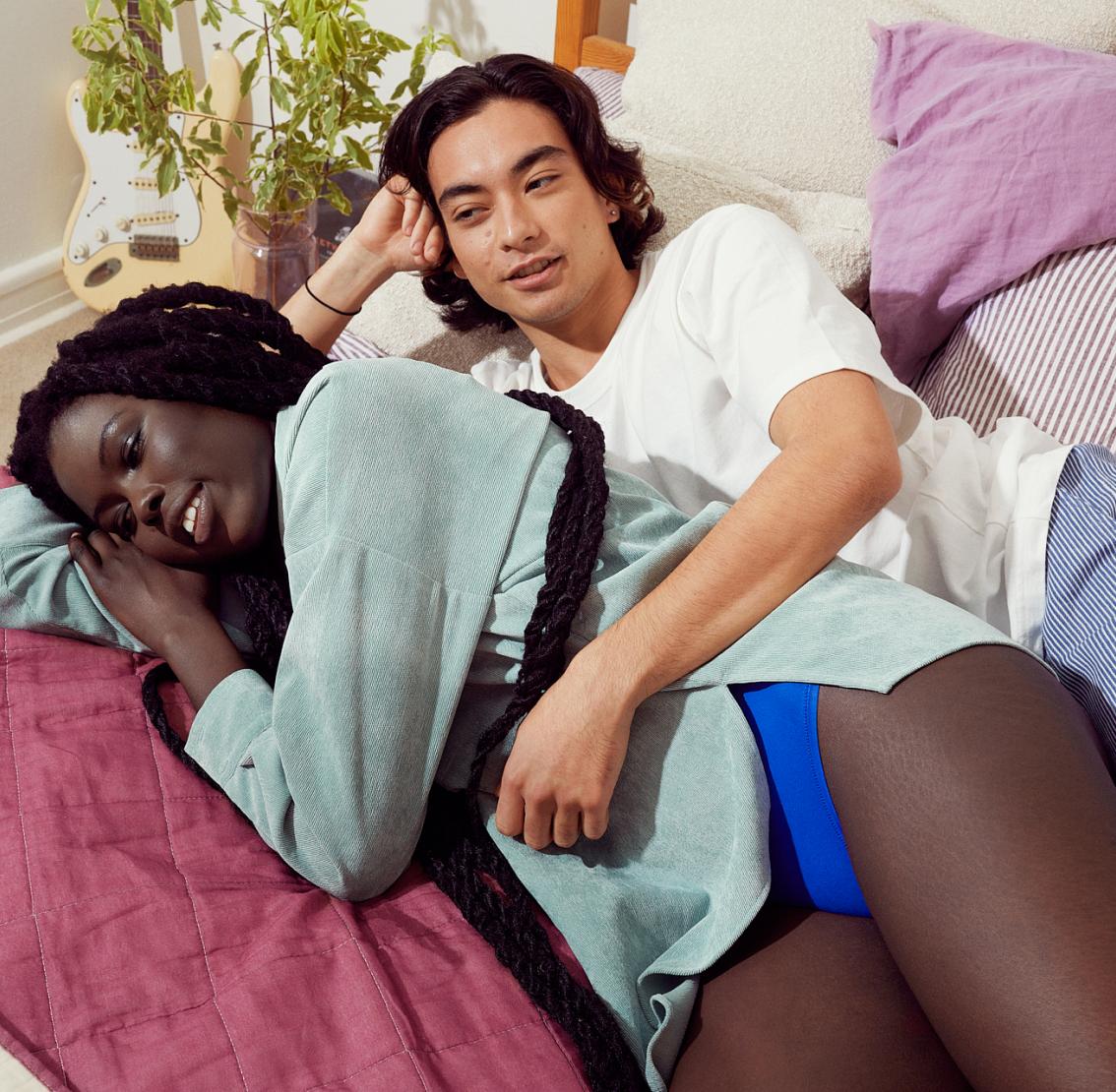
The science of desire tells us that it is driven by the interaction of the sympathetic (fight or flight) and parasympathetic (calming) system.
Lack of knowledge around desire has real side effects: with one-quarter of people who report issues with low libido, or around 1.3 million people, having bought over-the-counter supplements (for which there is not an evidence base).
Practising members of religions face issues with shame & lack of information about sex
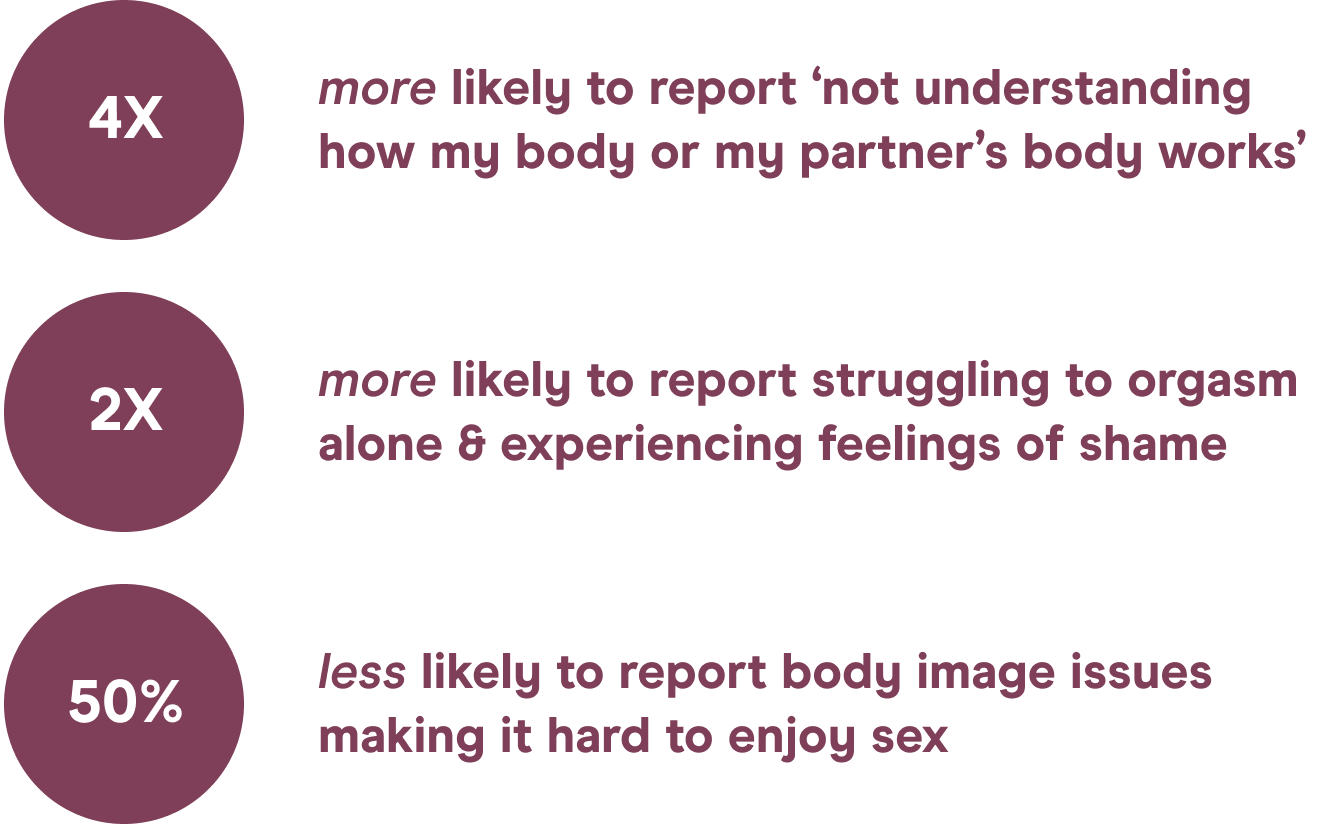
Parents are more likely to struggle with sex becoming repetitive

Body image is becoming a bigger issue for each generation
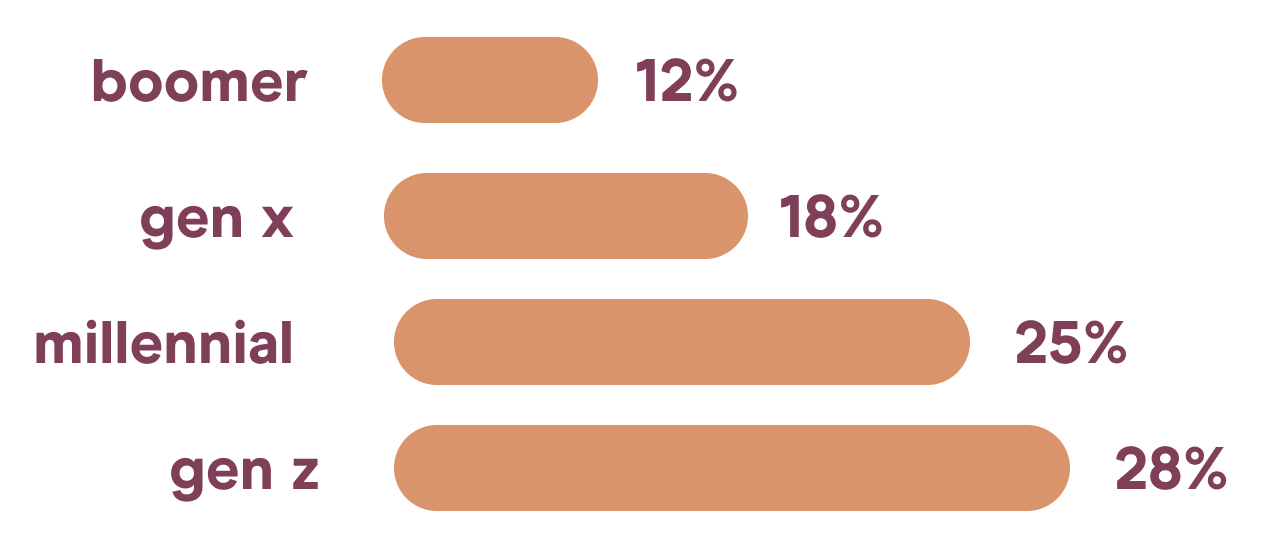
04: Sex education inside and outside the classroom
Formal sex ed is still falling short, but we’re taking matters into our own hands online
Consent remains an urgent public health crisis

Younger, female & LGBTQ+ people are most likely to have been affected:
- LGBTQ+ people are 2-4X more likely to have experienced a non-consensual interaction
- Two-thirds of females reported experiencing at least one interaction vs. one-third of males
- 71% of Gen Z reported non-consensual interactions, compared to 55% of Millennials and 27% of Boomers
*including unwanted physical touching, comments, advances, pressure from a spouse, non-consensual sex, stealthing, and digital photo and video sharing.

The movement to improve consent education has made powerful progress in raising awareness & creating policy change, but these changes have not yet flowed through to what recent graduates (Gen Z) are reporting they’ve learned in school. For example, just:
- 18% learned how to have respectful relationships 16% learned how to discuss consent with a partner
- 13% learned legal responsibilities around consent
- 11% learned how to be safe online
- 8% learned legal responsibilities around online interactions
- 7% learned the difference between porn & IRL sex
Most Australian adults received an extremely limited sex education
The only topic a majority learn about is pregnancy, and most people did not learn consent, online safety, sexual dysfunctions, conditions like endometriosis, masturbation, porn, online safety and safe LGBTQ+ sex
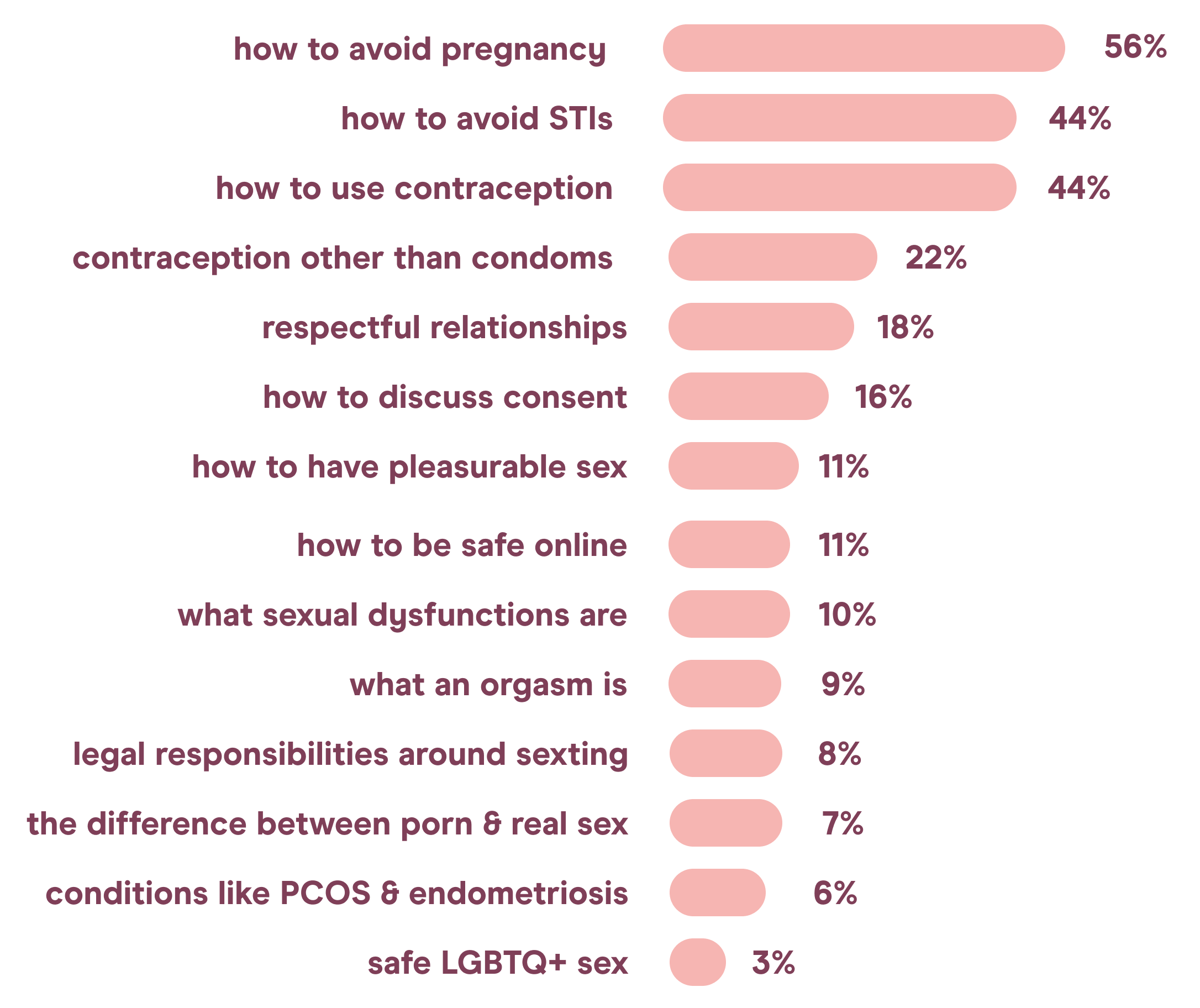
There is a gender gap in topics being taught: with male students receiving more information on pleasure, and greater responsibility for health and contraception falling on female students
males were more likely to learn:
What a sexual dysfunction is
What arousal is
How to have pleasurable sex
What an orgasm is and how to experience it
How to masturbate
females were more likely to learn:
How pregnancy occurs & how to avoid it
What STIs are & how they occur
Conditions like endometriosis & PCOS
How to use contraception
How to be safe online
However, Australians of all generations are self-educating about sex and relationships - especially using digital sources
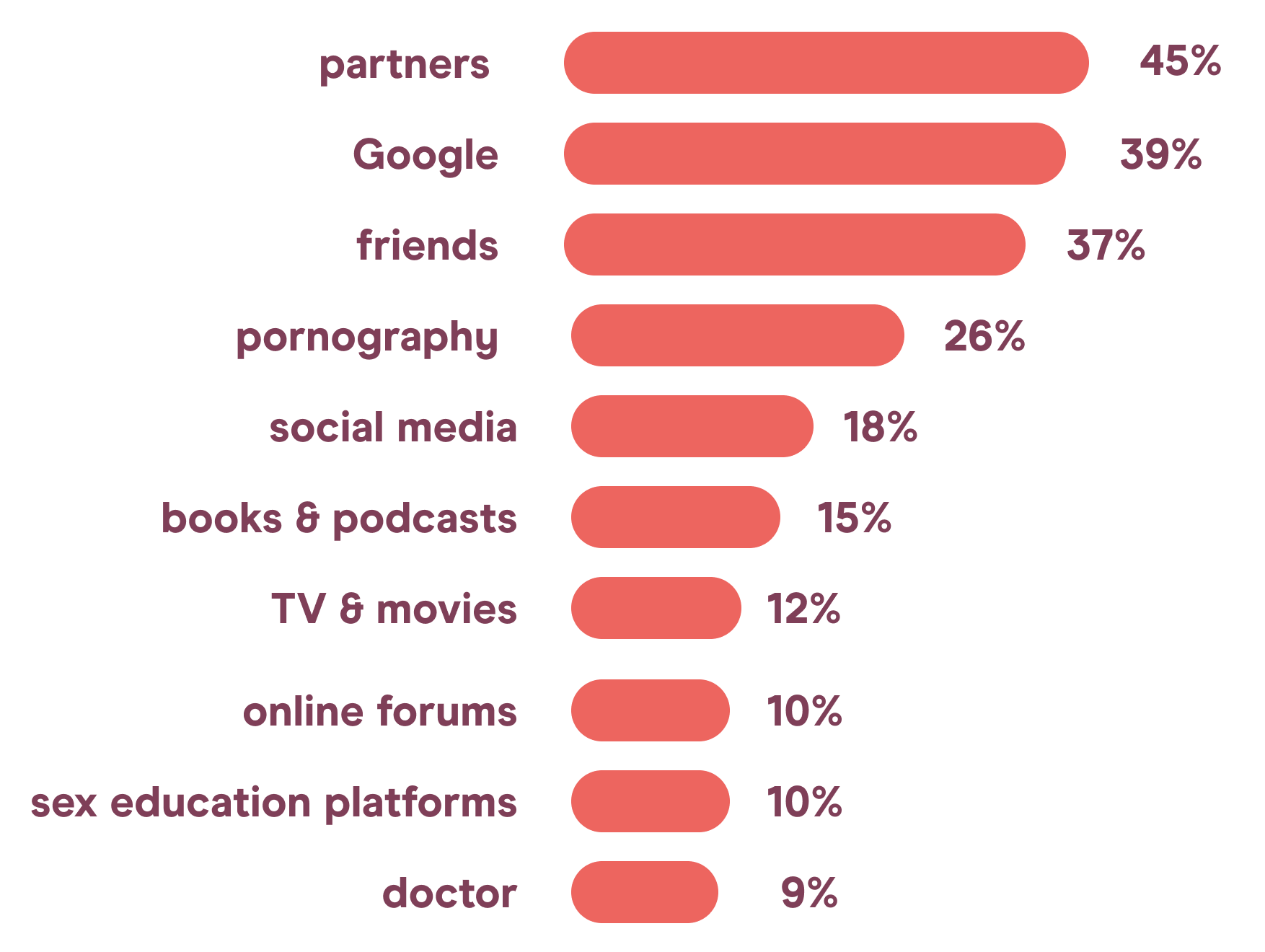

more likely to use ‘Dr Google’ than a doctor

Australians have now used a sex education platform

more likely to use porn than a doctor

more likely to use ‘Dr Google’ than a sex therapist or qualified practitioner
In the absence of relevant formal sex education, LGBTQ+ Australians are the heaviest users of digital self-education

However, these sources differ for different groups of LGBTQ+ people:
- Gay males use porn as their top source of sex education, and are 3X more likely to use porn for self-education
- Sex education platforms are 2.5X more likely to be used by lesbians, bisexuals and people who prefer to self-identify using alternative terms
05: Sexuality across the generations
Gen Z are actually doing things differently
Gen Z are not simply repeating the patterns of millennials - they’re approaching sex, eroticism & education differently

Top issues are confidence, self-esteem & stress around sex
31% low self-esteem affecting sex
29% not feeling confident during sex
28% body image making it hard to enjoy sex
24% not feeling interested in sex
20% feeling distracted, stressed or anxious during sex
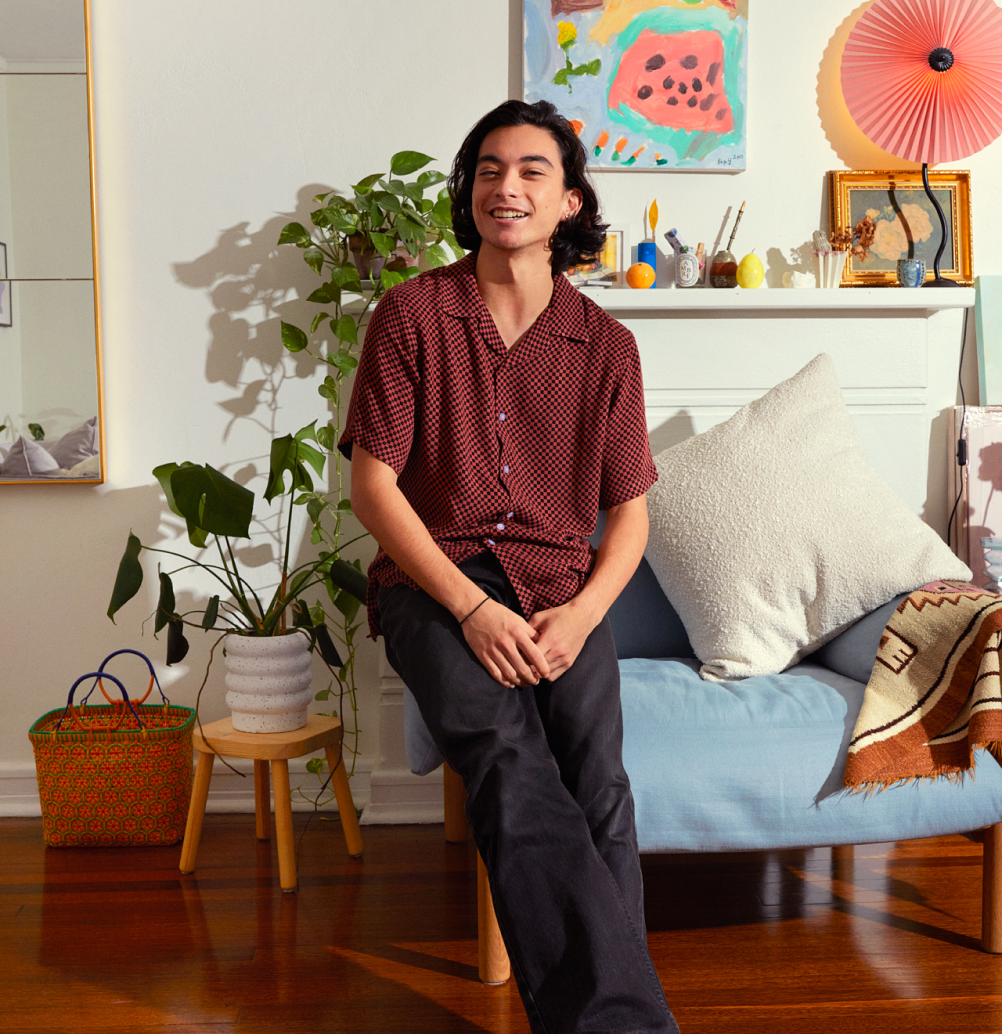
Gen Z are becoming the most sex-positive generation when it comes to sexual wellness products. In the last 12 months alone:
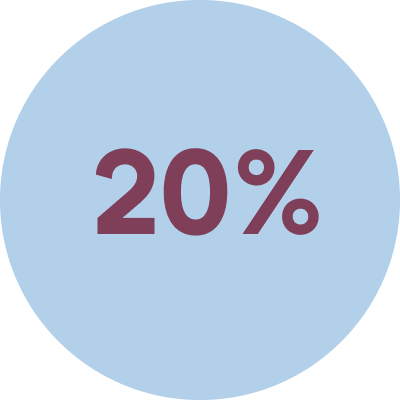
became more open to purchasing sex toys
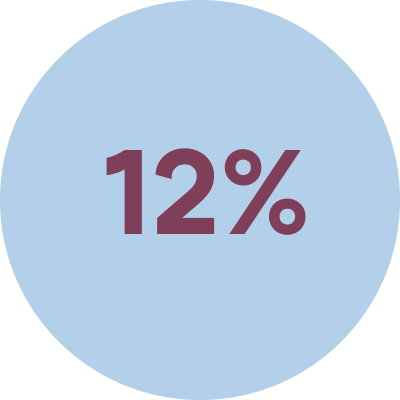
are using sex toys more solo

are using sex toys more with partners
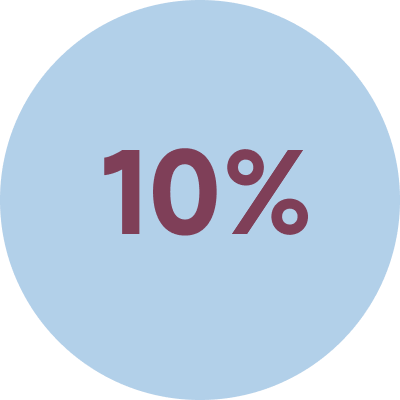
are exploring more adventurous or advanced options

Knowledge is power.
Sign up for emails to receive sex-positive education, research and of course: a few cheeky discounts!
06: Investing in sexual wellness
We’re buying more sex toys than ever
It’s, well, normal... a majority of us have used a sex toy!
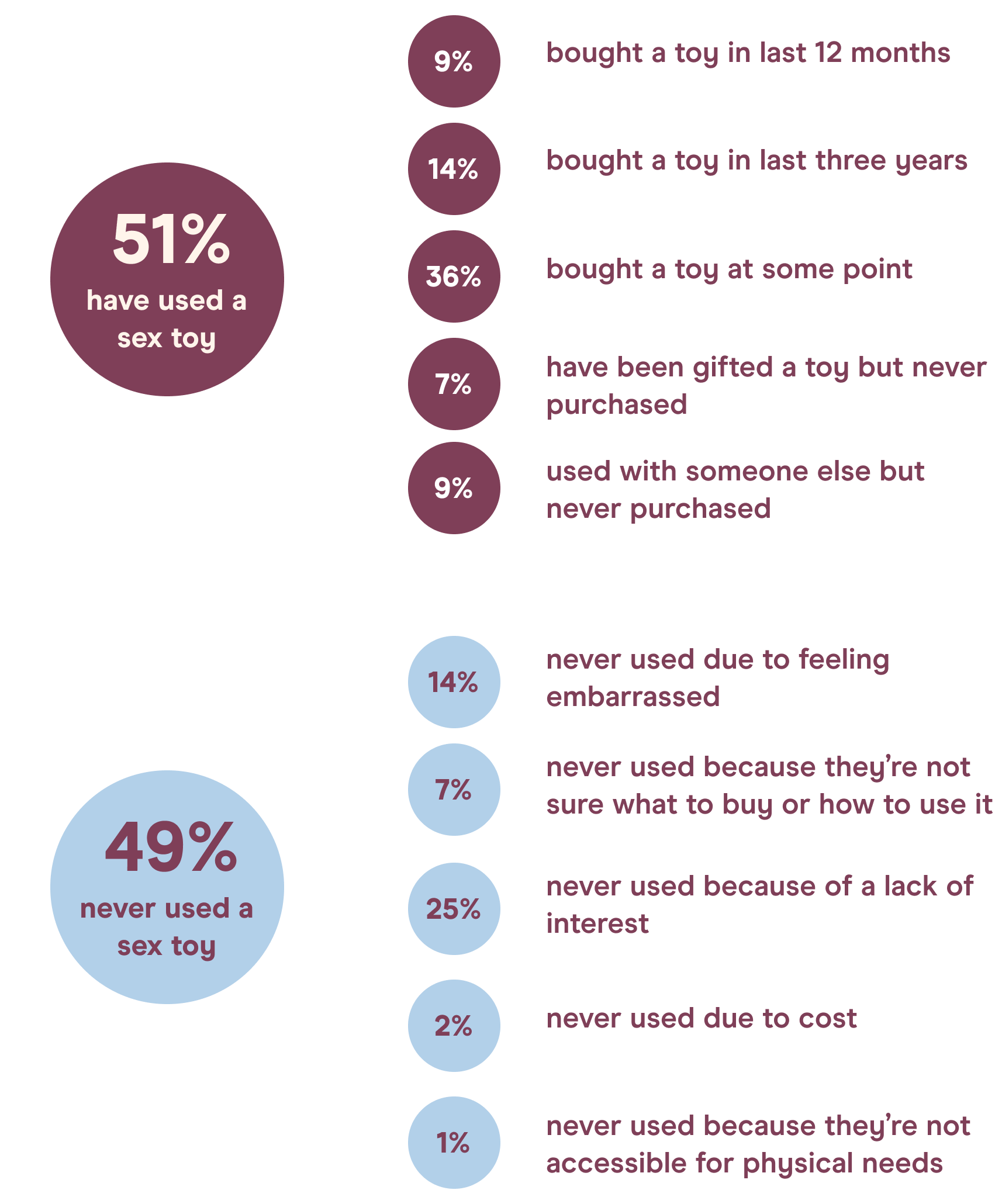
Which sexual wellness products are we buying the most of?
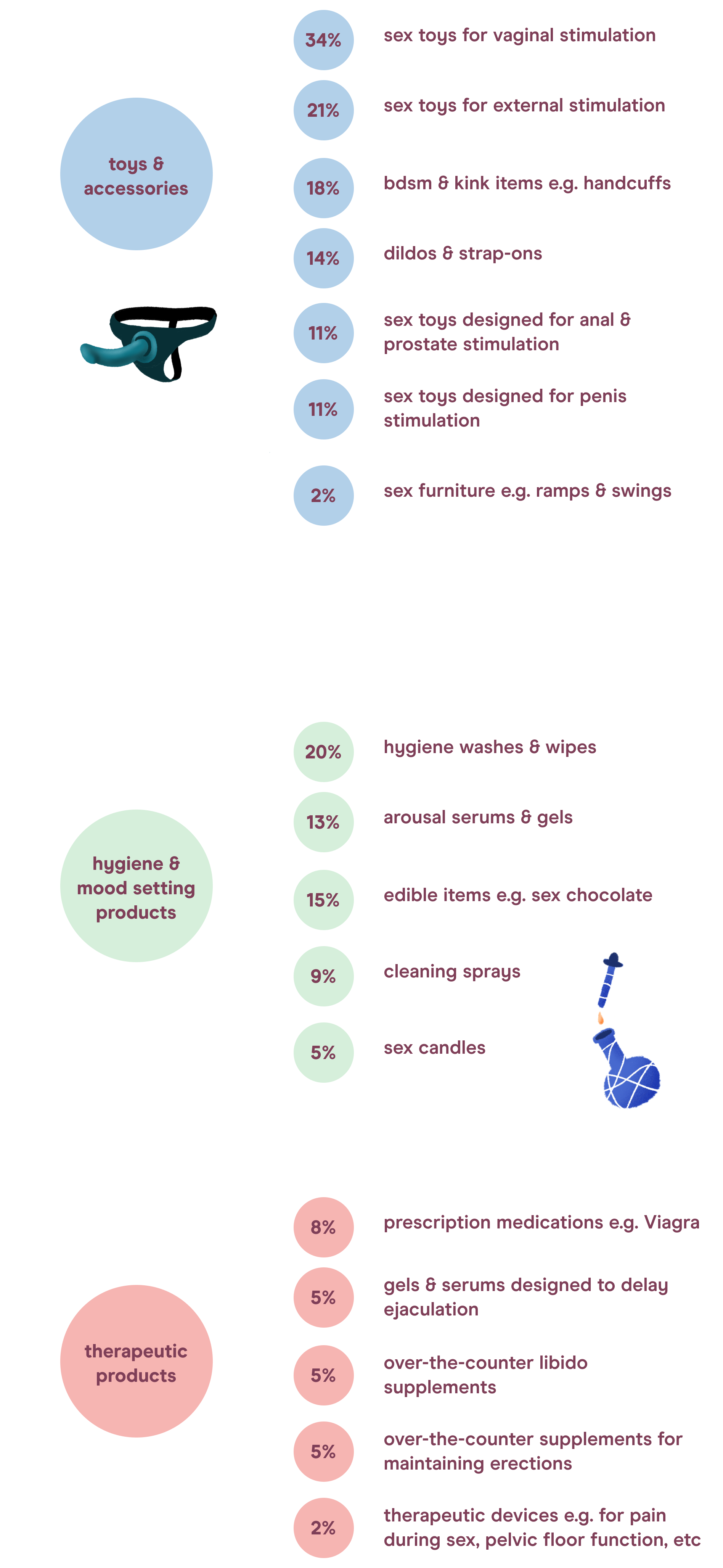
07: Porn, erotica & everything in between
We’re using porn in different & more positive ways
Free video porn remains the most commonly used, but ethical porn, erotica and new digital mediums are becoming more popular
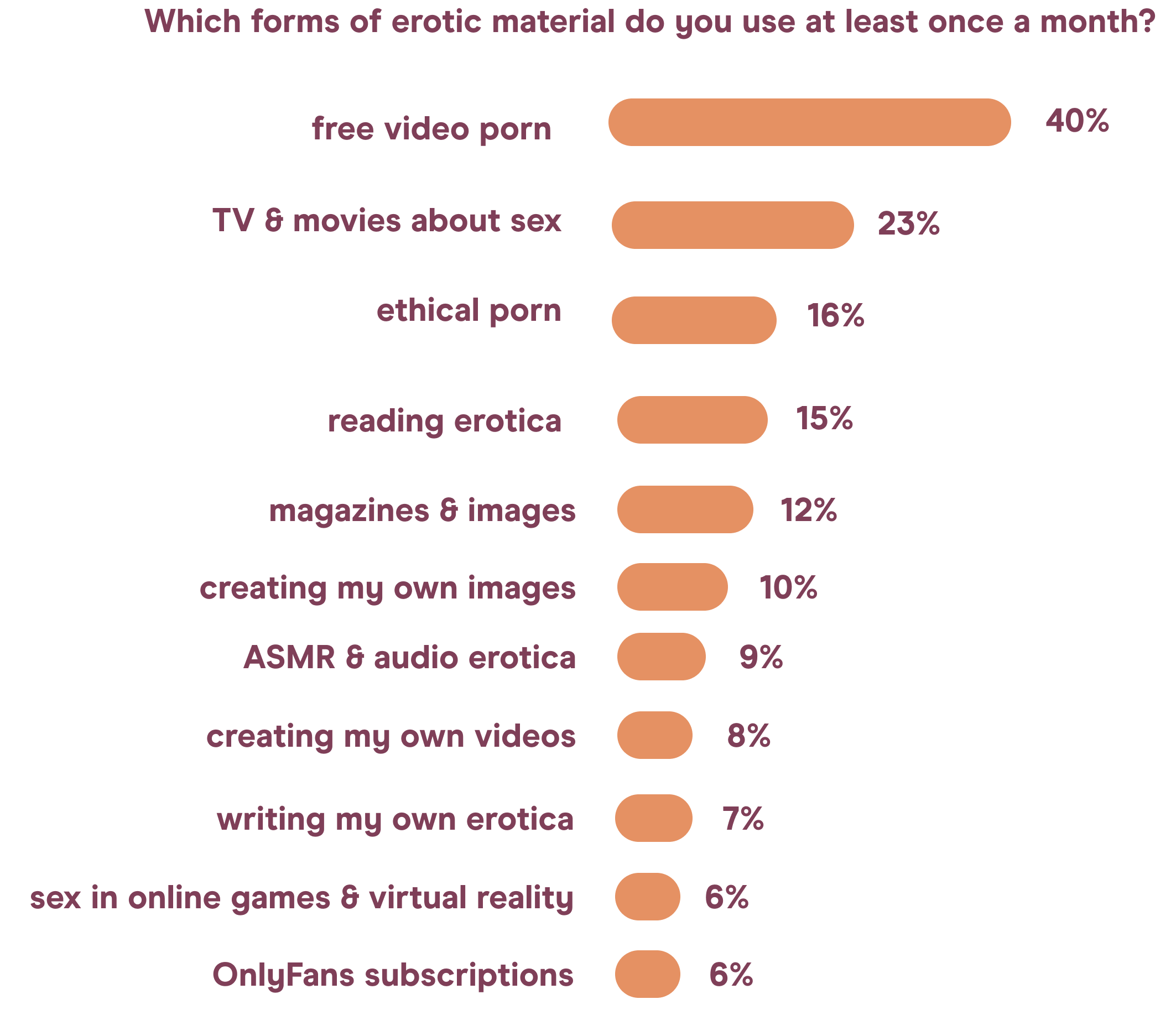

Digital pornography can be a flawed educational tool, and present a number of issues, for example:
- Is it showing pleasure, anatomy & bodies in realistic & diverse ways?
- Is it role modelling consent and contraceptive use?
- Is it ethically produced & distributed?
But on the whole, respondents tended to see pornography as a net positive influence on their sexual experiences.
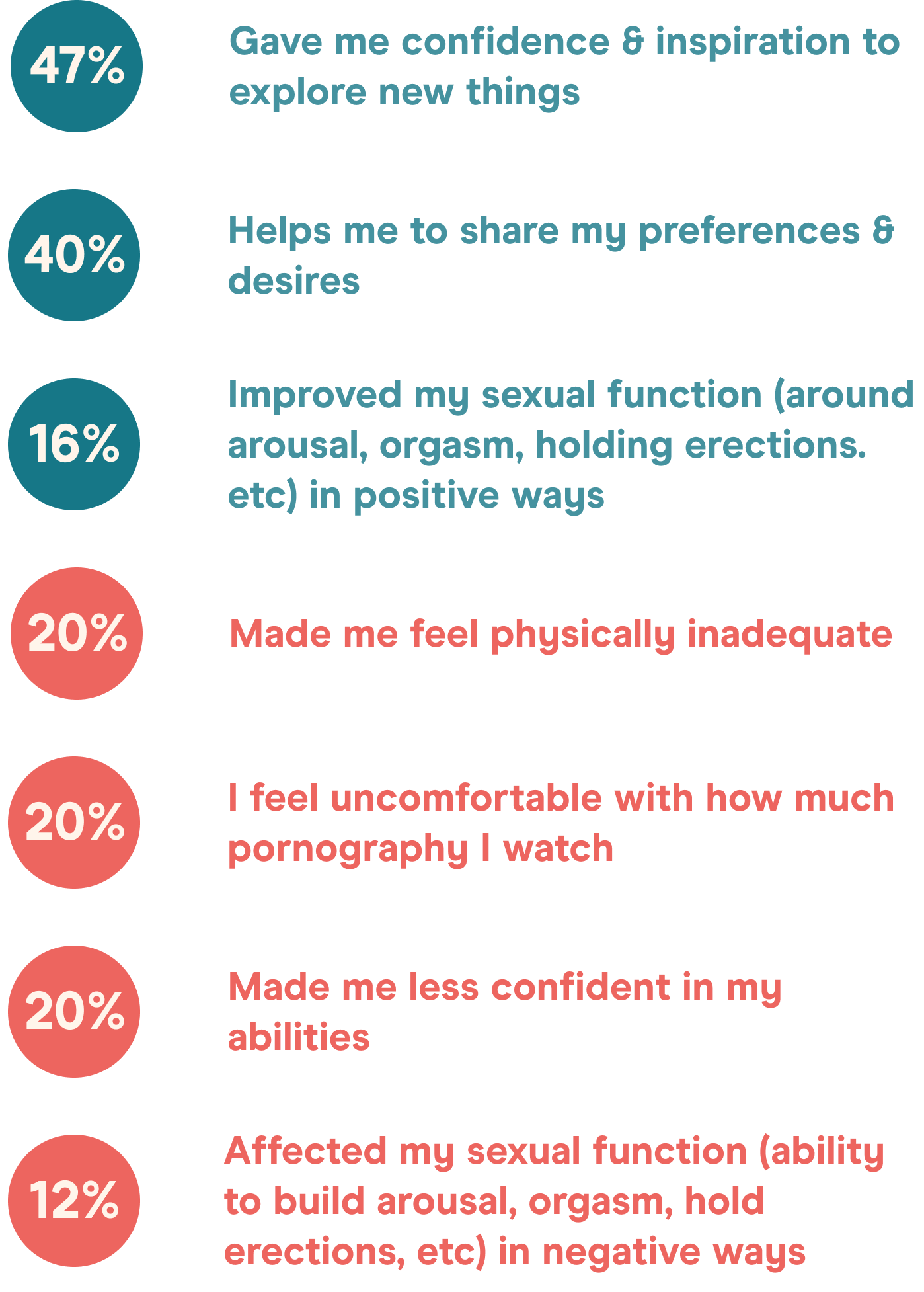
Porn is especially important as a positive tool for LGBTQ+ people
>2X more likely to say porn ‘gave me confidence and inspiration to explore new things’ and ‘gave me confidence to share my desires’
>3X more likely to say porn ‘made me question my sexuality’ & ‘improved my sexual function’

Slide into our DMs.
Sign up for emails to receive sex-positive education, research and of course: a few cheeky discounts!
08: Fantasies and turn-ons
We’re craving novelty in our fantasy lives

After a global pandemic which involved many restrictions on our intimate lives, Australians’ current top 10 fantasies tend towards a number of escapist and variety-seeking themes.
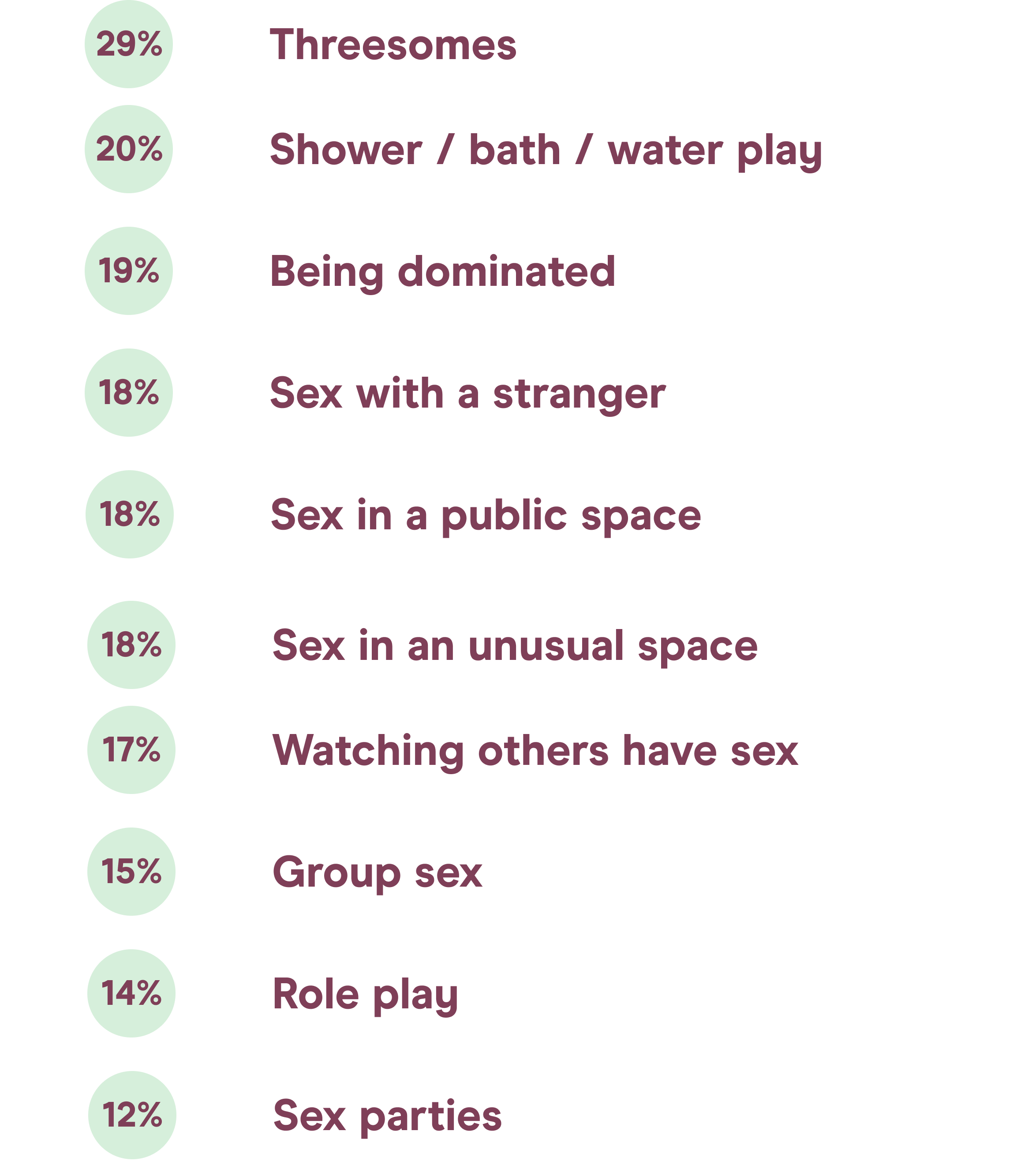
09: Modern dating
Dating apps are increasingly mainstream - but so are disappointment & discrimination
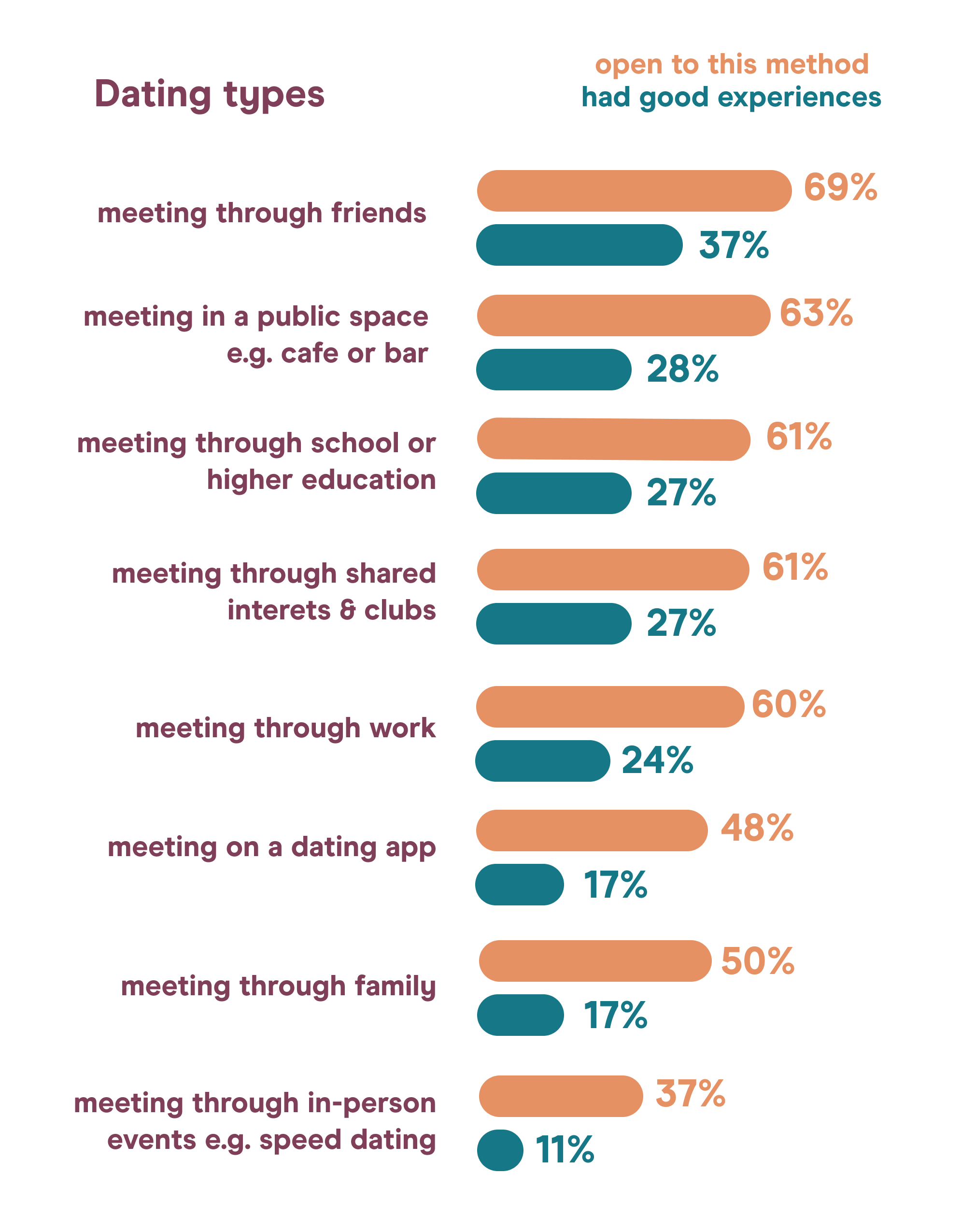
10% of Australians reported ‘traumatic’ or ‘bad’ experiences using dating apps - with some groups reporting much higher rates
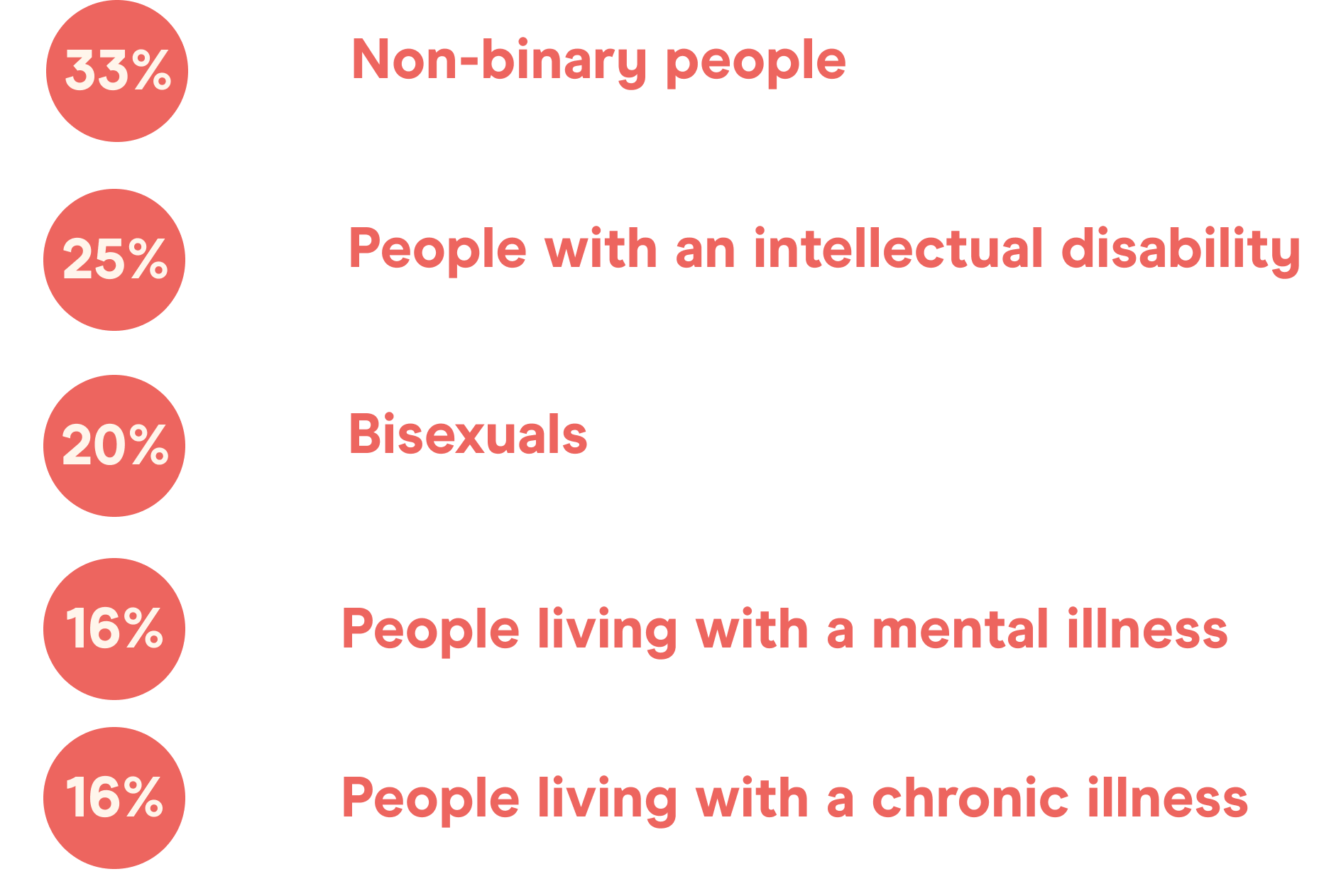
Harassment and discrimination were also disproportionately experienced by non-Caucasians on dating apps, for example:
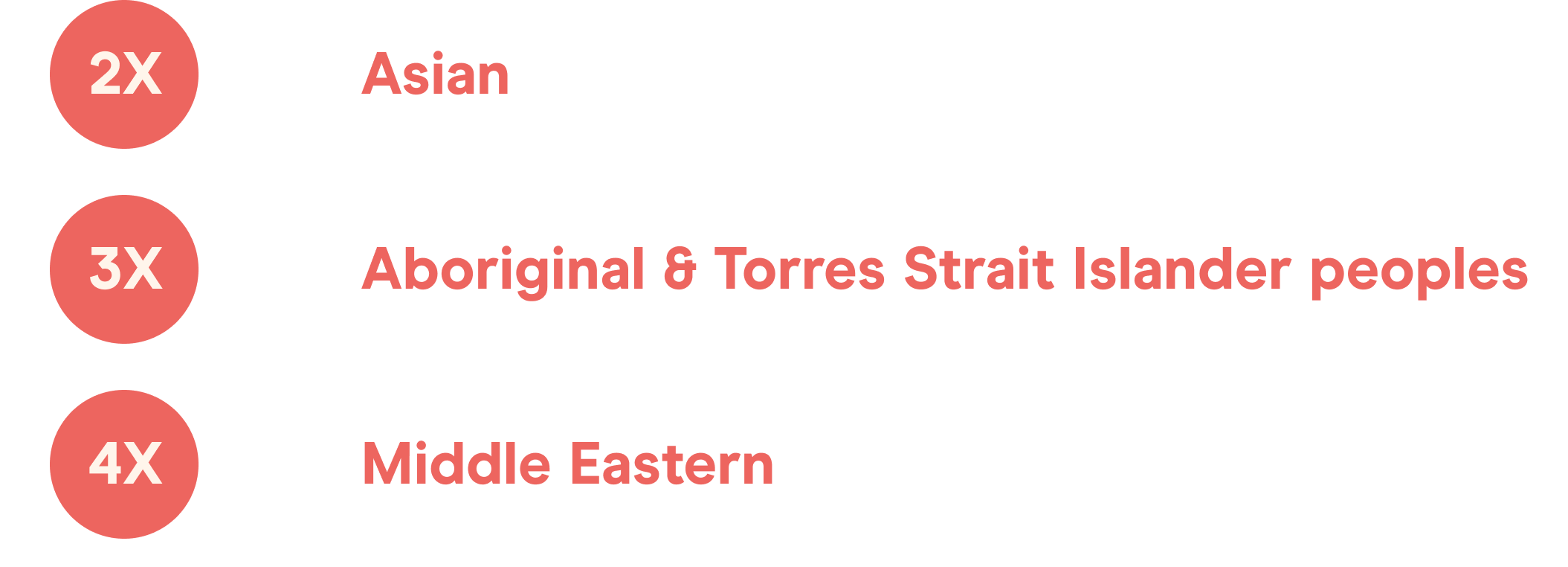

Let’s talk about sex (better).
Sign up for emails to receive sex-positive education, research and of course: a few cheeky discounts!
10: Changing our minds
From sex work to non-monogamy, public opinion is becoming less conservative
From same-sex marriage, to the #TeachUsConsent movement, the #MeToo movement and the rise of sexual wellness brands normalising open discussions about pleasure, we’ve seen a rise in cultural conversations about sex.
This year, the Big Sex Survey looked at opinion on a number of other issues to understand how views on sex and relationships are shifting more broadly.

Our views on sex work are largely positive or neutral, with a minority expressing concerns about morality or duress for sex workers
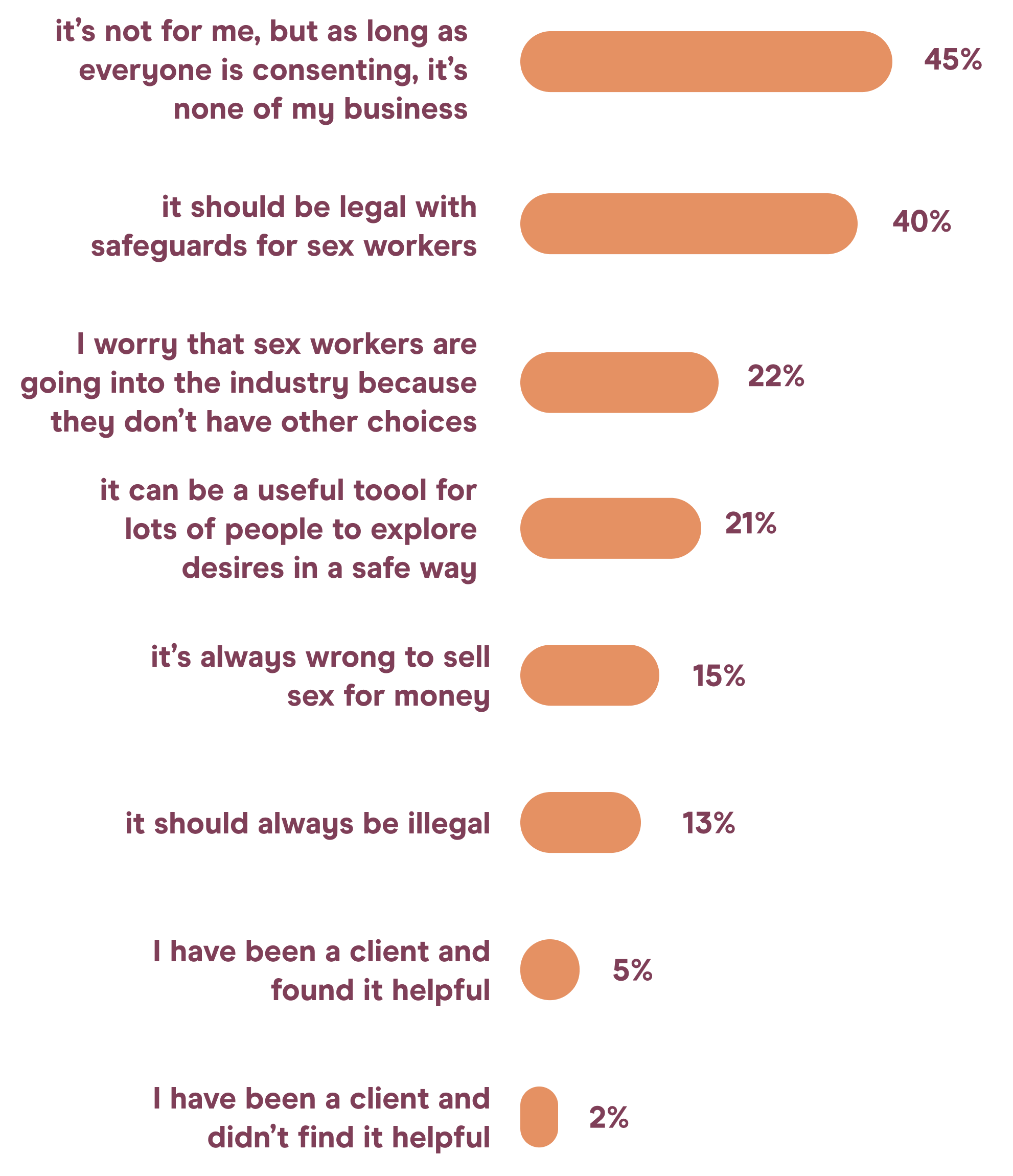
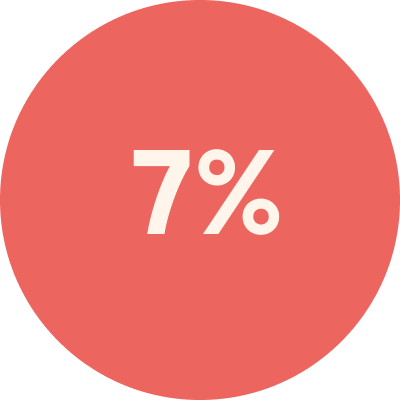
of Australians reported having been a client of the sex work industry
We’ve seen greater discussion of ethical non-monogamy in pop culture & social media - and this is reflected in rising interest in alternative relationship structures

Australians are curious about or currently practising non-monogamy
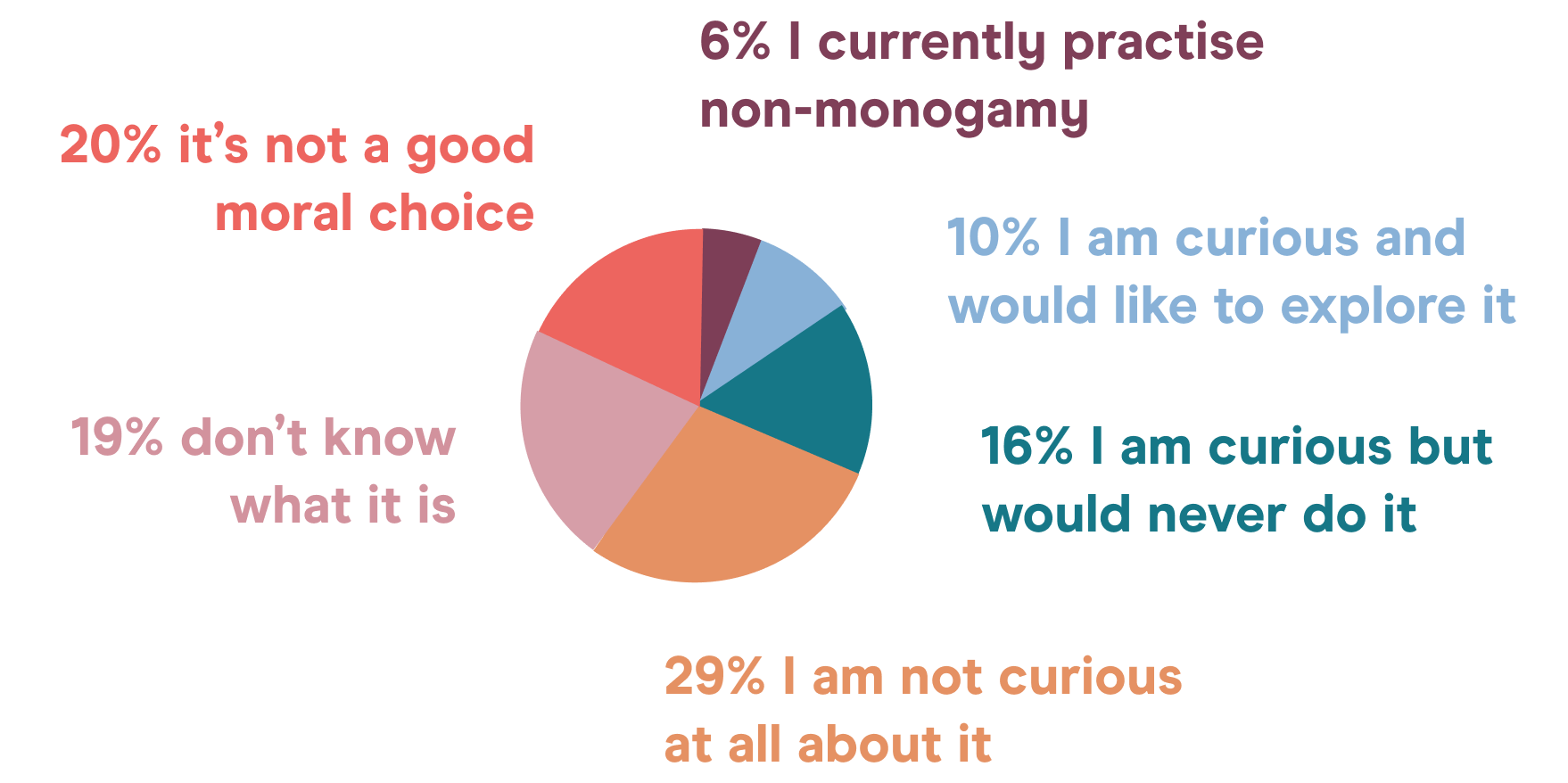
Bonus: State of orgasm
NT residents are orgasming the most - and ACT residents the least
People who reported ‘always’ or ‘almost always’ orgasming during sex
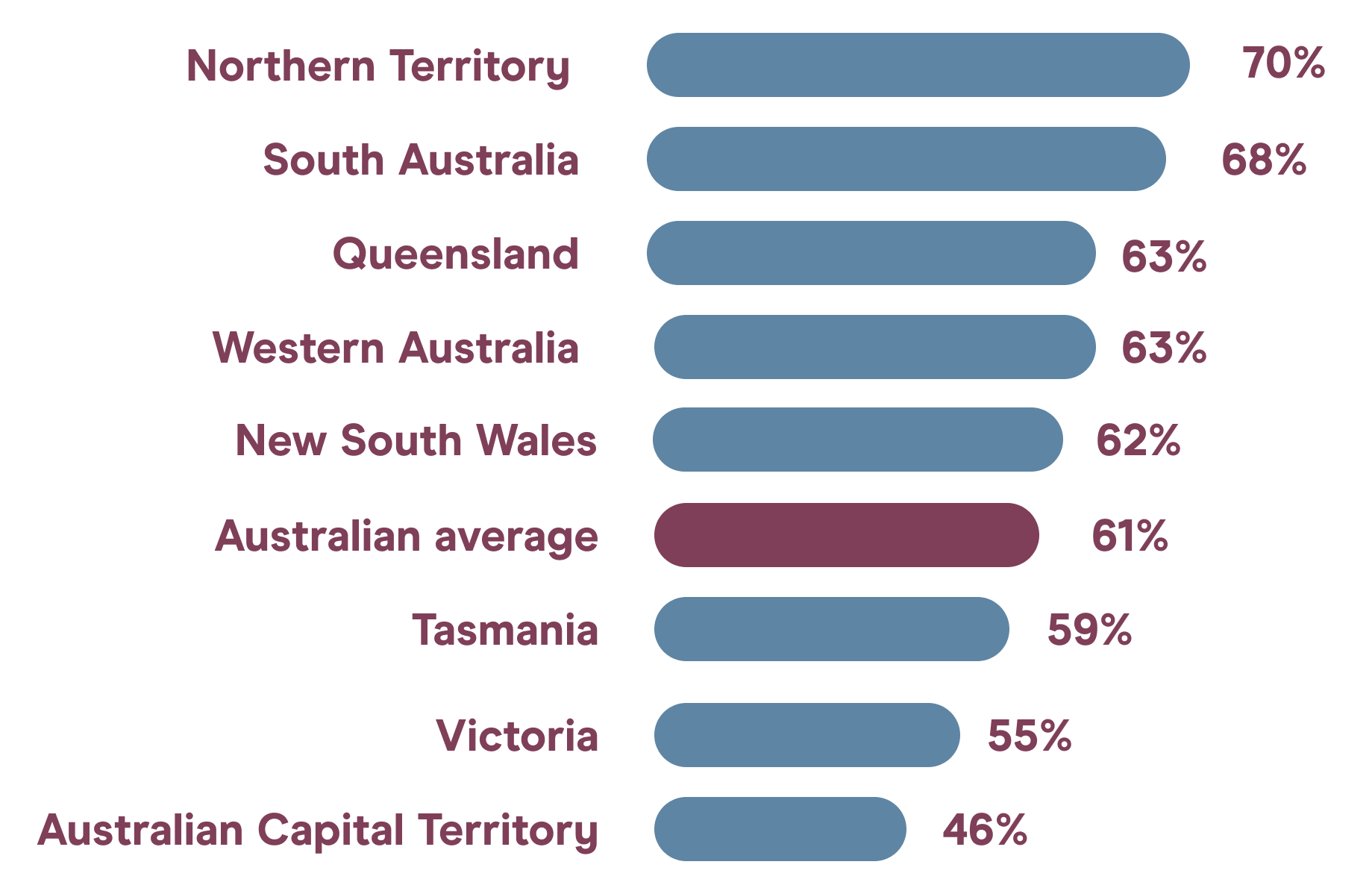

Looking for more normal?
Sign up for emails to receive sex-positive education, research and of course: a few cheeky discounts!
Want to work with us to improve the social conversation about sex?
Supporting evidence-based, high-quality dialogues about sex, dating and relationships is critical to our mission.
We are delighted to share the information from The Big Sex Survey for press, policy and collaboration purposes.
For a full question list, bespoke data requests & data set access, feel free to reach out to the NORMAL team via hey@itsnormal.com.
*Note: Where the terms 'female' and 'male' are used, this refers to female-identifying and male-identifying respondents in terms of gender. Where sexuality is listed as 'prefer to self-describe', respondents have chosen not to categorise as heterosexual, bisexual or homosexual for the purposes of this survey. This community is vitally important to NORMAL, and due to the small sample size of respondents listing their gender as non-binary and/or sexuality as ‘prefer to self-describe’, NORMAL plans to run a separate survey focussed on these communities which can deliver more robust findings.
